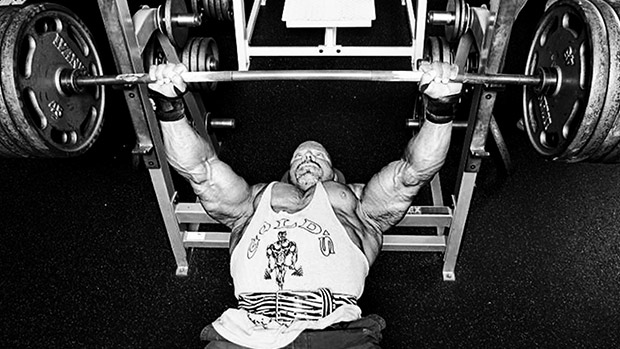IntroductionRest? pause sets have long been a popular technique in the world of bodybuilding and strength training. They offer unique benefits for athletes looking to increase muscle size, strength, and endurance. Rest pause sets can be performed on nearly any exercise with weights, and with slight modifications, can be used to target specific muscles in the body.Definition of Rest Pause SetsRest? pause sets are a type of weightlifting technique that involves performing multiple reps of an exercise, followed by a brief rest, then continuing to perform additional reps until muscle failure is reached. The goal is to push beyond the typical number of reps performed in one set, leading to greater muscle fatigue and ultimately increased hypertrophy (muscle growth).The rest period between each set is typically short - around 15-30 seconds - allowing for a brief recovery before continuing the next set. This gives muscles enough time to rest while still keeping them under tension, leading to greater activation and stimulation.Benefits of Rest Pause SetsRest? pause sets offer multiple benefits for athletes looking to increase muscle size and strength. Firstly, they allow for greater recruitment of muscle fibers than traditional weightlifting techniques.By pushing beyond the typical number of reps performed in one set, rest pause sets force muscles to work harder than usual resulting in higher levels of hypertrophy. Additionally, because rest pause sets are so intense they create a metabolic demand on the body which translates into greater fat burn or calorie expenditure over time.This makes them an efficient way to build lean mass while also burning body fat. Because these techniques focus on increasing overall muscular endurance (the ability to perform work at high intensities without tiring) it carries over into other aspects of life such as better posture or improved athletic performance.Brief History of Rest Pause SetsThe? concept of rest pause sets has been around since the days of classic strongmen and weightlifting competitions. However, it was not until the 1950s that bodybuilders began taking notice and incorporating this technique into their routines. Throughout the years, rest pause sets have been used by some of the biggest names in bodybuilding history including Arnold Schwarzenegger, Ronnie Coleman, and Phil Heath.<img width="342" src="https://i0.wp.com/www.onlinefitnesscoach.com/wp-content/uploads/2016/05/REST-TIME-BETWEEN-SETS.png?resize=1080%2C1080&ssl=1">They have also gained popularity in other areas such as powerlifting, where they are used to increase overall strength. Today, with new research and understanding of muscle physiology, rest pause sets remain a valuable tool for athletes looking to build size and strength.<img width="486" src=" ">How to Perform Rest Pause SetsChoosing? the Right ExerciseThe? first step in performing rest pause sets is choosing the right exercise. Compound exercises, such as bench press, squat, or deadlifts are perfect for rest pause sets because they work multiple muscle groups at once and allow you to lift heavier weights. Isolation exercises can also be used for rest pause sets, but they may require lighter weights.Selecting the Proper WeightOnce? you've chosen your exercise, it's time to select the proper weight. For a standard rest pause set, you'll typically want to choose a weight that's around 70-80% of your one-rep max. This weight should be challenging enough that you'll reach failure after 8-12 reps. If you're new to rest pause sets or unsure of your one-rep max, start with a lighter weight and adjust as needed.Performing the First Set<img width="480" src="
">How to Perform Rest Pause SetsChoosing? the Right ExerciseThe? first step in performing rest pause sets is choosing the right exercise. Compound exercises, such as bench press, squat, or deadlifts are perfect for rest pause sets because they work multiple muscle groups at once and allow you to lift heavier weights. Isolation exercises can also be used for rest pause sets, but they may require lighter weights.Selecting the Proper WeightOnce? you've chosen your exercise, it's time to select the proper weight. For a standard rest pause set, you'll typically want to choose a weight that's around 70-80% of your one-rep max. This weight should be challenging enough that you'll reach failure after 8-12 reps. If you're new to rest pause sets or unsure of your one-rep max, start with a lighter weight and adjust as needed.Performing the First Set<img width="480" src=" "><img width="402" src="
"><img width="402" src=" ">To perform a rest pause set, begin by doing as many reps as possible with your chosen weight. Be sure to maintain proper form throughout each rep. Once you've hit failure, rack or set down the weight.Taking a Short BreakTake? a short break (10-20 seconds) before picking up the weight again for another set of reps. This break allows for some recovery without fully resting and resetting between sets.Performing Additional RepsFrom? here on out in this exercise set instead of stopping after hitting failure take breaks every 10-20 seconds until reaching desired reps target (e.g., if targeting 15 reps then take short breaks every time reaching failure until reaching 15 total repetitions). Aim for two or three additional mini-sets with short breaks in between each mini-set before ending this exercise set. By following these steps for performing rest pause sets, you can take your training to the next level and achieve greater gains in strength and muscle hypertrophy.Variations of Rest Pause SetsRest?-pause training can be performed in a variety of ways to provide unique challenges to the body. This section will explore some popular variations of rest-pause training that can help you break through plateaus and continue making gains.Double or Triple Drop Set<img width="445" src="
">To perform a rest pause set, begin by doing as many reps as possible with your chosen weight. Be sure to maintain proper form throughout each rep. Once you've hit failure, rack or set down the weight.Taking a Short BreakTake? a short break (10-20 seconds) before picking up the weight again for another set of reps. This break allows for some recovery without fully resting and resetting between sets.Performing Additional RepsFrom? here on out in this exercise set instead of stopping after hitting failure take breaks every 10-20 seconds until reaching desired reps target (e.g., if targeting 15 reps then take short breaks every time reaching failure until reaching 15 total repetitions). Aim for two or three additional mini-sets with short breaks in between each mini-set before ending this exercise set. By following these steps for performing rest pause sets, you can take your training to the next level and achieve greater gains in strength and muscle hypertrophy.Variations of Rest Pause SetsRest?-pause training can be performed in a variety of ways to provide unique challenges to the body. This section will explore some popular variations of rest-pause training that can help you break through plateaus and continue making gains.Double or Triple Drop Set<img width="445" src=" ">A double or triple drop set is a variation on the rest-pause technique that involves using the same weight for multiple sets with decreasing reps. For example, if you were performing a double drop set on bicep curls, you would start with a weight that you could lift for 8-10 reps. After reaching failure on your first set, you would rest for 10-15 seconds and then immediately drop the weight by 10-20% and perform another set to failure. After reaching failure again, you would rest and drop the weight one more time before performing your final set to failure.This technique allows for greater volume without sacrificing intensity, as each set is taken to or beyond momentary muscular failure. It also provides an opportunity to work different parts of the muscle by changing the angle or grip between sets.Cluster SetsCluster? sets involve taking short breaks between repetitions within a set, allowing for slightly heavier weights to be used without compromising form or range of motion. For example, if you were performing cluster sets on bench press with a weight that you could lift for 6 reps max, you might perform two reps before resting briefly (5-10 seconds) before performing two more reps until all six are completed.This technique allows you to push harder during each rep since it doesn't require lifting the same amount of weight continuously without interruption. https://lawrence-morrison.thoughtlanes.net/maximize-your-gains-with-rest-pause-sets-a-guide-to-supercharging-your-workouts-1693964648 sets also increase overall lifting volume by breaking up heavier weights into more manageable segments.Extended Rest-Pause SetsExtended? rest-pause training involves taking longer rest periods between sets and extending the total duration of the workout. This technique is especially useful for advanced lifters who have hit a plateau with traditional rest-pause sets. For example, if you were performing extended rest-pause training on deadlifts, you might perform your first set to failure before resting for 2-3 minutes.You would then perform another set to failure before resting again for 2-3 minutes. This process would be repeated for a total of 4-5 sets.This technique increases overall volume and time under tension, leading to increased muscle growth and strength gains over time. However, it can also be quite taxing on the body and should only be attempted by experienced lifters who are already in good physical condition.Benefits of Rest-Pause TrainingImproves? Strength and EnduranceRest?-pause training is an excellent way to improve both your strength and endurance. Because rest-pause sets allow you to perform more reps with heavier weights, you can increase your strength by challenging your muscles in a new way.This is especially effective for those who have hit a plateau in their current workout routine and are looking for a new challenge. In addition, performing rest-pause sets can also help increase your endurance.By pushing yourself to perform additional reps during the rest period, you are encouraging your body to adapt to higher levels of physical demand. Over time, this leads to better overall endurance, allowing you to push through even the toughest workouts.Increases Muscle HypertrophyRest?-pause training is an effective method for increasing muscle hypertrophy or muscle growth. The technique encourages muscle fatigue by allowing more repetitions with heavier weight loads than conventional training using set reps and fixed resting periods. By performing rest-pause sets, you are exposing your muscles to a greater volume of work than they may be used to.This increased workload helps stimulate muscle growth over time as the body repairs itself after the exercise-induced damage done during workouts. As a result, rest-pause training has been shown to promote significant gains in both muscle size and strength.Time-Efficient WorkoutFor? individuals who have busy schedules, it can be difficult to find time for extended workouts at the gym. Fortunately, rest-pause training offers an efficient alternative that saves time without sacrificing results. By performing multiple sets within one exercise session with short rests between reps or sets allows you can complete multiple exercises efficiently within less amount of time while still achieving positive results from each set.Rest-pause training allows individuals who are short on time or tired after working long hours at work to still achieve their fitness goals. This technique provides an excellent way for busy people to incorporate exercise into their daily routine while maintaining a healthy lifestyle.Common Mistakes to Avoid When Doing Rest-Pause TrainingNot? Using Proper FormOne? of the most common mistakes people make when performing rest-pause sets is sacrificing proper form for the sake of getting more reps in. This can lead to a greater risk of injury as well as limiting the effectiveness of the exercise. It's important to focus on maintaining proper form throughout your rest-pause sets, even if it means doing fewer reps.To ensure you're using proper form, start with a weight that you can lift with good technique and gradually increase the weight as needed. If you find yourself struggling to maintain good form during your rest-pause sets, consider lowering the weight or taking longer breaks between sets.Choosing Too Heavy WeightsAnother? mistake people often make when performing rest-pause sets is choosing weights that are too heavy. This can lead to poor form and a higher risk of injury, as well as limiting the number of reps you're able to perform. To avoid this mistake, start with a weight that allows you to perform at least 6-8 reps with good technique.<img width="448" src="
">A double or triple drop set is a variation on the rest-pause technique that involves using the same weight for multiple sets with decreasing reps. For example, if you were performing a double drop set on bicep curls, you would start with a weight that you could lift for 8-10 reps. After reaching failure on your first set, you would rest for 10-15 seconds and then immediately drop the weight by 10-20% and perform another set to failure. After reaching failure again, you would rest and drop the weight one more time before performing your final set to failure.This technique allows for greater volume without sacrificing intensity, as each set is taken to or beyond momentary muscular failure. It also provides an opportunity to work different parts of the muscle by changing the angle or grip between sets.Cluster SetsCluster? sets involve taking short breaks between repetitions within a set, allowing for slightly heavier weights to be used without compromising form or range of motion. For example, if you were performing cluster sets on bench press with a weight that you could lift for 6 reps max, you might perform two reps before resting briefly (5-10 seconds) before performing two more reps until all six are completed.This technique allows you to push harder during each rep since it doesn't require lifting the same amount of weight continuously without interruption. https://lawrence-morrison.thoughtlanes.net/maximize-your-gains-with-rest-pause-sets-a-guide-to-supercharging-your-workouts-1693964648 sets also increase overall lifting volume by breaking up heavier weights into more manageable segments.Extended Rest-Pause SetsExtended? rest-pause training involves taking longer rest periods between sets and extending the total duration of the workout. This technique is especially useful for advanced lifters who have hit a plateau with traditional rest-pause sets. For example, if you were performing extended rest-pause training on deadlifts, you might perform your first set to failure before resting for 2-3 minutes.You would then perform another set to failure before resting again for 2-3 minutes. This process would be repeated for a total of 4-5 sets.This technique increases overall volume and time under tension, leading to increased muscle growth and strength gains over time. However, it can also be quite taxing on the body and should only be attempted by experienced lifters who are already in good physical condition.Benefits of Rest-Pause TrainingImproves? Strength and EnduranceRest?-pause training is an excellent way to improve both your strength and endurance. Because rest-pause sets allow you to perform more reps with heavier weights, you can increase your strength by challenging your muscles in a new way.This is especially effective for those who have hit a plateau in their current workout routine and are looking for a new challenge. In addition, performing rest-pause sets can also help increase your endurance.By pushing yourself to perform additional reps during the rest period, you are encouraging your body to adapt to higher levels of physical demand. Over time, this leads to better overall endurance, allowing you to push through even the toughest workouts.Increases Muscle HypertrophyRest?-pause training is an effective method for increasing muscle hypertrophy or muscle growth. The technique encourages muscle fatigue by allowing more repetitions with heavier weight loads than conventional training using set reps and fixed resting periods. By performing rest-pause sets, you are exposing your muscles to a greater volume of work than they may be used to.This increased workload helps stimulate muscle growth over time as the body repairs itself after the exercise-induced damage done during workouts. As a result, rest-pause training has been shown to promote significant gains in both muscle size and strength.Time-Efficient WorkoutFor? individuals who have busy schedules, it can be difficult to find time for extended workouts at the gym. Fortunately, rest-pause training offers an efficient alternative that saves time without sacrificing results. By performing multiple sets within one exercise session with short rests between reps or sets allows you can complete multiple exercises efficiently within less amount of time while still achieving positive results from each set.Rest-pause training allows individuals who are short on time or tired after working long hours at work to still achieve their fitness goals. This technique provides an excellent way for busy people to incorporate exercise into their daily routine while maintaining a healthy lifestyle.Common Mistakes to Avoid When Doing Rest-Pause TrainingNot? Using Proper FormOne? of the most common mistakes people make when performing rest-pause sets is sacrificing proper form for the sake of getting more reps in. This can lead to a greater risk of injury as well as limiting the effectiveness of the exercise. It's important to focus on maintaining proper form throughout your rest-pause sets, even if it means doing fewer reps.To ensure you're using proper form, start with a weight that you can lift with good technique and gradually increase the weight as needed. If you find yourself struggling to maintain good form during your rest-pause sets, consider lowering the weight or taking longer breaks between sets.Choosing Too Heavy WeightsAnother? mistake people often make when performing rest-pause sets is choosing weights that are too heavy. This can lead to poor form and a higher risk of injury, as well as limiting the number of reps you're able to perform. To avoid this mistake, start with a weight that allows you to perform at least 6-8 reps with good technique.<img width="448" src=" ">From there, gradually increase the weight until you reach your target rep range for each set. Keep in mind that it's better to use lighter weights and perform more reps than it is to use heavier weights and sacrifice good form.<img width="403" src="
">From there, gradually increase the weight until you reach your target rep range for each set. Keep in mind that it's better to use lighter weights and perform more reps than it is to use heavier weights and sacrifice good form.<img width="403" src=" ">Taking Too Long BreaksRest?-pause sets are designed to be challenging, but taking too long of a break between each set can diminish their effectiveness. When performing rest-pause sets, aim for short breaks between each set - around 10-15 seconds - in order to keep your muscles engaged and maintain intensity throughout your workout.If you find that you need longer breaks in order to recover between sets, consider lowering the weight or reducing the number of reps per set until you're able to complete each set with shorter rest periods. Remember that the goal of rest-pause sets is to challenge your muscles and increase the intensity of your workout, so it's important to maintain that intensity throughout each set.ConclusionRest?-pause training is an excellent technique for those who want to take their workouts to the next level and beyond. It offers a host of benefits, including increased strength, hypertrophy, and endurance. This approach is also efficient on time, making it ideal for anyone who wants to maximize their gym time without sacrificing results.Summary of Key Points<img width="307" src="
">Taking Too Long BreaksRest?-pause sets are designed to be challenging, but taking too long of a break between each set can diminish their effectiveness. When performing rest-pause sets, aim for short breaks between each set - around 10-15 seconds - in order to keep your muscles engaged and maintain intensity throughout your workout.If you find that you need longer breaks in order to recover between sets, consider lowering the weight or reducing the number of reps per set until you're able to complete each set with shorter rest periods. Remember that the goal of rest-pause sets is to challenge your muscles and increase the intensity of your workout, so it's important to maintain that intensity throughout each set.ConclusionRest?-pause training is an excellent technique for those who want to take their workouts to the next level and beyond. It offers a host of benefits, including increased strength, hypertrophy, and endurance. This approach is also efficient on time, making it ideal for anyone who wants to maximize their gym time without sacrificing results.Summary of Key Points<img width="307" src=" ">Rest-pause training involves performing a set of an exercise to failure or near-failure, taking a short break, then performing additional reps until failure or near-failure again. This process can be repeated multiple times with the same weight. Rest-pause sets offer numerous benefits such as improved strength and endurance, muscle hypertrophy and can be done in less time than traditional training.When using this technique in your workout routine; choose the right exercise that targets your desired muscle group, select an appropriate weight that allows you to perform 6-10 reps on the first set before failure or near-failure occurs. Take only a 15-20 second break between sets before continuing with additional reps.Recommendations for Incorporating into Your Workout RoutineRest? pause sets can be incorporated into any workout routine by choosing 1-3 exercises per session and performing them with a rest-pause approach. These exercises can be compound movements like squats, deadlifts or bench press as well as isolation exercises like bicep curls or leg extensions.Just remember not to go too heavy with weights on rest pause sets as it may lead to injury if proper form isn't maintained during execution. Incorporating rest pause sets into your workout routine provides variety while also challenging yourself against what you thought was possible ? so give it a try!<img width="421" src="
">Rest-pause training involves performing a set of an exercise to failure or near-failure, taking a short break, then performing additional reps until failure or near-failure again. This process can be repeated multiple times with the same weight. Rest-pause sets offer numerous benefits such as improved strength and endurance, muscle hypertrophy and can be done in less time than traditional training.When using this technique in your workout routine; choose the right exercise that targets your desired muscle group, select an appropriate weight that allows you to perform 6-10 reps on the first set before failure or near-failure occurs. Take only a 15-20 second break between sets before continuing with additional reps.Recommendations for Incorporating into Your Workout RoutineRest? pause sets can be incorporated into any workout routine by choosing 1-3 exercises per session and performing them with a rest-pause approach. These exercises can be compound movements like squats, deadlifts or bench press as well as isolation exercises like bicep curls or leg extensions.Just remember not to go too heavy with weights on rest pause sets as it may lead to injury if proper form isn't maintained during execution. Incorporating rest pause sets into your workout routine provides variety while also challenging yourself against what you thought was possible ? so give it a try!<img width="421" src=" ">
">
![[PukiWiki] [PukiWiki]](image/pukiwiki.png)